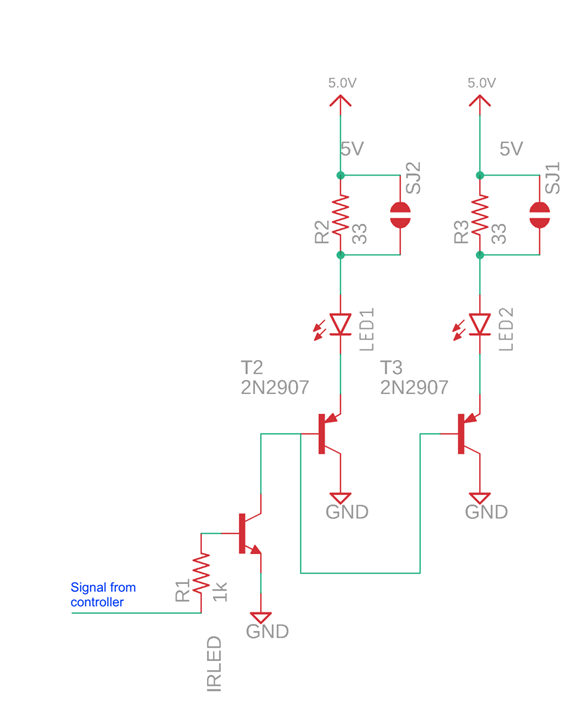Hello!
I was pondering this, and searching into the webs and on the lines, and then realized I have this awesome community of smart people here that probably already know the answers!
Short version:
Are 1/4 watt resistors enough to pulse an LED at 1 amp for an IR remote?
The LED is rated for 100mA continuous, 1.5 amp peak, and 1.6v forward voltage max.
I used an online calculator to figure out that with a 5v supply, a 6.8 ohm resistor will give it a 500mA current, and 3.4 ohms gives a 1amp current.
I'm not sure how to calculate the current on that LED - is it 1.6 volts x 1 amp? or 5 volts x 1 amp?
Either way though - even just the 1.6 watts is 6 times the current rating of the resistors I have. Is that ok for pulsed use for remote control like that?
Should I be using a set of parallel resistors instead (knowing I'll have to up the resistor values to compensate) ?
Project details:
My heat pump is kinda noisy, so at night we set it to "night mode" which is the quietest fan setting it has. We can't keep it at that setting because it won't heat the house well enough, so in the morning we turn the temperature up a few degrees and set the fan to "automatic".
I've been trying to automate this process, because the heat pump remote is kind of annoying in that you have to step through all 5 fan speeds to get back to Automatic.
I bought a little WiFi IR remote off Amazon a few years ago, which is ok for turning the heat up in the morning, but it only supports 3 basic fan speeds, so it doesn't properly turn the fan down at night. I recently bought another similar newer unit, hoping that after a few years my Daikin heat pump would now be fully supported, but it's still the same.
But there's hope! I found a Github repository that actually fully supports my Daikin heat pump codes! And for my favourite IoT micro-controller even - the Wemos D1 Mini.
Using a basic IR LED I had scavenged from something in the past, I was able to get it to work, but the IR LED range was just -barely- able to reach the heat pump when aimed just right (I realize now that I was using far to big a resistor value).
So I got a few new "high power" IR LEDs (the clear QED234 ones) from element14's shop, which I hope will give me the range I need. Then I did the aforementioned calculations to find the ideal resistor values to get some good oompf out of the LED to reach further.
I was just about to start soldering things up when I realized that 1amp of current is higher than the 1/4 watt rating of the resistors I have.
I'm hoping you'll have some good advice for this software-biased hobbyist
Also - I'm guessing a resistor failure would generally not cause a short? (ie, losing a resistor is ok, I have plenty more - losing an IR LED is tougher as I only have a few!)
Thanks!
-Nico


